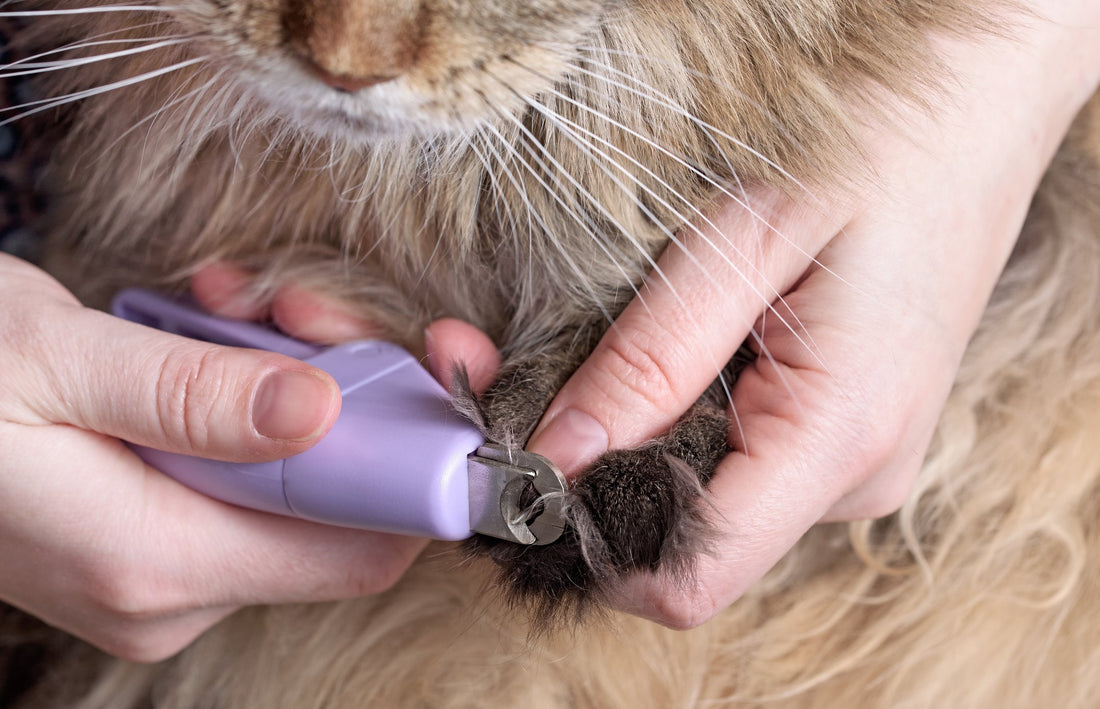
How To Make Trimming Your Elderly Cat's Nails Less of a Pain
If you were to ask cat owners what their most dreaded cat grooming experience is, it’s likely that a majority will say trimming their cat’s nails. Trimming nails can feel like a battle with cats, who might even try to use them against you in retaliation.
However, just because this grooming process is difficult doesn’t mean you can avoid it forever. Nail trimming is a critical part of cat care at all ages, but especially for older cats.
Why is Feline Nail Trimming So Important?
Your cat’s nails grow in layers that can accumulate over time. These layers need to be shed routinely to prevent the nail from becoming ingrown and painful. Younger cats tend to keep their own nails in check by using scratching posts to shed these layers, but they might not always be successful, so trimming might be necessary to mitigate these problems.
As cats age and develop health problems, nail trimming becomes even more important. Arthritic cats may have a decreased ability to sharpen their own nails without pain. Elderly cats, too, tend to have more problems scratching at posts to sharpen them and keep them in good shape on their own. Additionally, older cats tend to have thicker and more brittle nails that will need to be trimmed more often to avoid overgrowth.
Not trimming nails and letting the layers add up can lead to overgrown nails, which will grow in a curve towards your cat’s paw pad. If the nail grows too long, it could puncture the paw pad, leading to painful wounds, bleeding and possibly even infections. If you notice your cat is limping, licking its paw or bleeding, check its paws to see if the nail has caused a wound. You might need to have the nail trimmed and removed by a vet because these injuries can be extremely painful.
Elderly cats aren’t always able to retract their claws as easily as young cats, either. This puts them at a greater risk for getting them stuck on the carpet or furniture, resulting in broken nails. Broken nails can be very painful for cats but are easily avoided by keeping the nails cut short and blunt.
Tips to Trim Your Older Cat’s Nails Successfully
You’ll want to try to trim your elderly cat’s nails around every two weeks, to be safe. Always use special animal nail clippers, as they will minimize accidental harm to your cat’s nails.
Getting your cat used to nail trimming is easiest when you start at a young age. This way, your kitten will grow up accustomed to having its paws handled. If you have an older cat, trimming its nails might be a little more difficult, but not impossible—you just need more patience.
- You need to make sure your cat is calm and possibly even sleepy. A relaxed cat is less likely to put up a fight. Massage your cat’s paws gently, giving it time to adjust to being touched on the paws and taking breaks if it gets agitated. You may not be able to trim the nails the first one or two times you do this, but it should get easier with time.
- Get your cat used to the sound of nail clippers. Hold your cat and press the clippers together a few times to allow it to understand the sound and where it’s coming from.
- When your cat is comfortable, press its paw so the nail extends and gently trim one nail at a time in one quick motion. You want to trim it to create a blunt edge, removing the sharp tip.
- When trimming, always be careful to avoid the quick. The quick is the part of the nail where it turns pink or red because it is filled with blood vessels and nerves. If you cut into this area, it will be very painful for your cat, and it might have a hard time receiving nail trimmings ever again.
- Give your cat a treat as a reward after nail trimming to encourage cooperative behavior next time.
If your cat will absolutely not allow you to touch its nails, consider asking your vet or groomer for assistance, instead. You shouldn’t let nail trimming fall to the wayside because it’s very important to prevent nail tearing and paw pad wounds.
Make sure you keep nail care a top priority with your elderly cat. Nail injuries can happen without warning if you aren’t paying attention.


